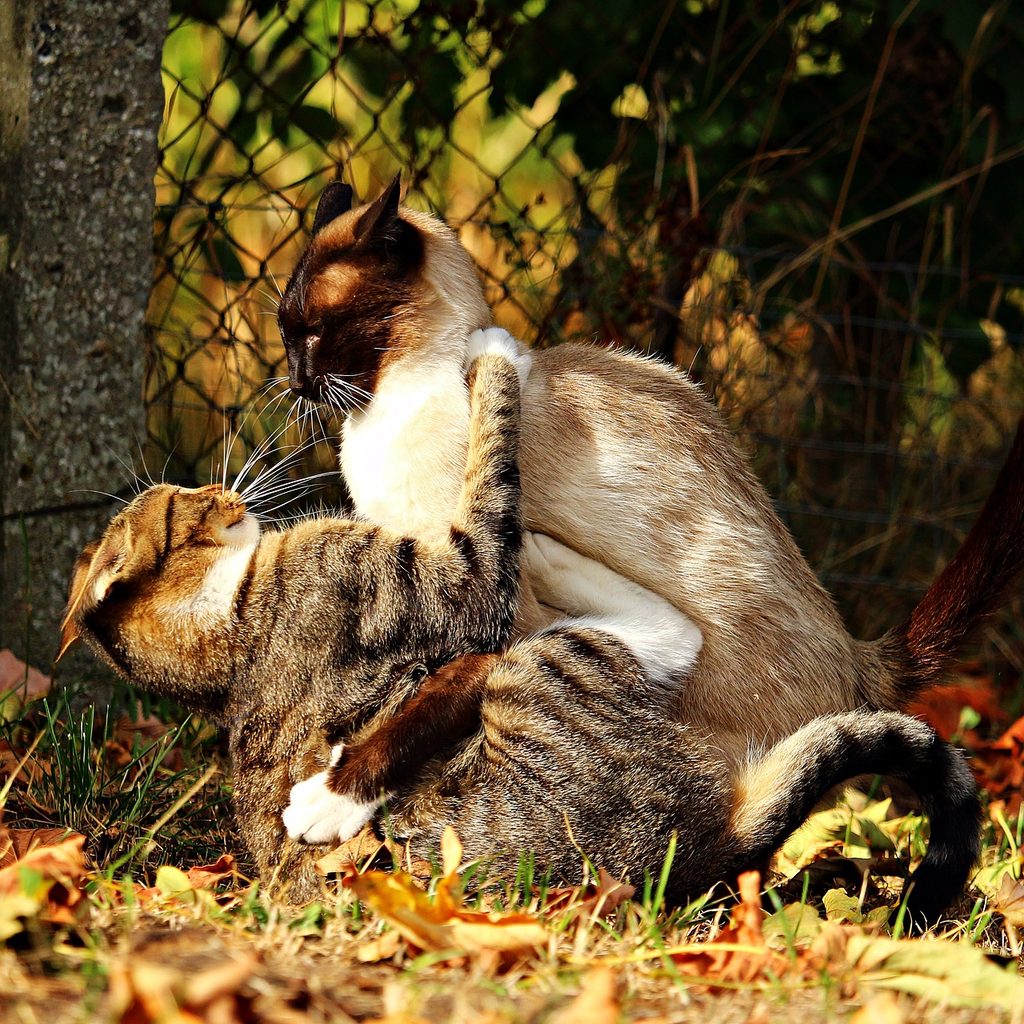When cats play, there’s plenty of tumbling, swatting, and jumping on each other. Unfortunately, all of the action of playing can look a lot like fighting, too, and it can be hard to tell the two apart. While many cats who know each other well won’t fight often, it’s still possible for disagreements to break out, and you might need to step in to help keep your cats safe. But interfering in a good old play session is unnecessary, probably frustrating to your cats, and might even get you accidentally scratched. So are cats playing or fighting? Here’s how to tell.
Watch for body language
Union Lake Veterinary Hospital recommends that you carefully watch your cats’ body language to better understand how they’re feeling and interacting. If your cats assume stiff postures with their ears pressed back close to their heads, they’re indicating that they’re afraid or stressed. Stressed cats may raise their tails up, crouch or arch their bodies up, and even raise up their fur and display their teeth. Any of these signs indicate that your cats likely aren’t playing and are probably fighting, or at least staring each other down in preparation for a fight.

Listen for vocalizations
Most cats won’t make vocalizations while they’re playing, so if you notice that your cats are hissing, growling, or even screaming, these noises could indicate that your cats have moved beyond play into fighting. If you start hearing these vocalizations, then it’s time to step in and break up the fight.
Try to interrupt
There’s an easy way to test whether your cats are playing around or starting to fight: try to interrupt their interactions by calling to them. If your cats both respond to your calls happily and then go back to playing, chances are they’re just fine.
But if your cats are fighting, you might notice a different response. Your cats might not respond to you at all and might continue engaging with each other. Or, if they do respond to you, one might slink away and hide, indicating that the cat is feeling threatened.

How to deal with fighting cats
If your cats are fighting, it’s important to take the right steps to break up the fight. Cat Behavior Associates recommends that you never get in between fighting cats bare-handed, since you’re likely to be injured, scratched, and bitten. Your cats might even redirect their aggression at you, which could lead to serious injuries.
Instead, you can separate the cats by startling them. Make a loud noise by clapping your hands or slamming a door. If that doesn’t separate the cats, then use an object like a couch cushion or a cardboard box to physically separate them so they can’t see each other. Then, separate the cats in different rooms.
You’ll need to carefully consider how long to keep the cats separated. If the cats are housemates and are well-acquainted with each other, they may just need a brief cooling-off period before you let them both back out into the house. If your cats are just getting to know each other, a fight can indicate that you’re taking the introduction process too quickly. You’ll need to revert to keeping the cats separated and gradually letting them meet safely underneath a door, then through a pet gate until they’re well-accustomed to each other’s presence.
As you reintroduce your cats, it’s important to keep a close eye on them. Stay present and be ready to distract the cats with toys or separate them if needed.
You can play an important role in helping to prevent future fights. That prevention starts with making sure that your cats are familiar and comfortable with each other, which means providing a gradual, controlled introduction that keeps both cats safe. Once your cats are living in the same space peacefully, you can help to maintain that peace by ensuring that they have plenty of resources, including food and litter boxes, and that they don’t have to fight over these items. Place multiple food bowls throughout your home, and make sure that you have one more litter box than you have cats. Place these items so that they’re easily accessible, and so that one cat can’t trap the other while they’re accessing these areas. With some careful planning, you can help to prevent potential fights and keep your cats safe.


